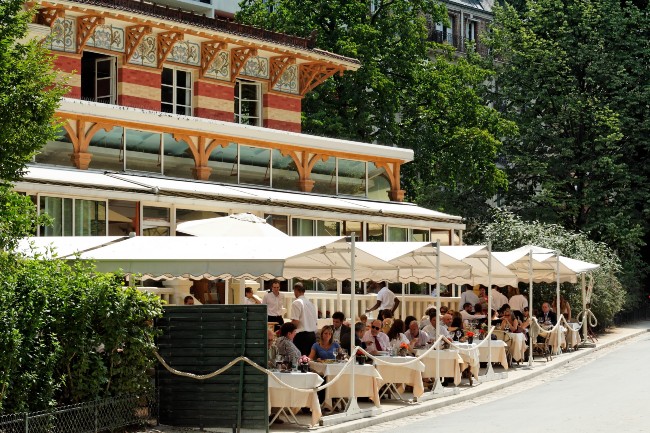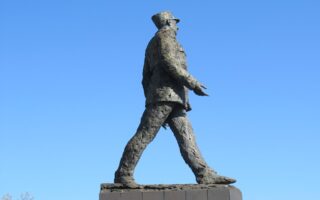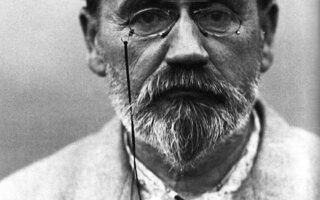Parc Montsouris: Nature and Artifice in the 14th Arrondissement


- SUBSCRIBE
- ALREADY SUBSCRIBED?
BECOME A BONJOUR PARIS MEMBER
Gain full access to our collection of over 5,000 articles and bring the City of Light into your life. Just 60 USD per year.
Find out why you should become a member here.
Sign in
Fill in your credentials below.
Most people are unaware that the City of Light offers treasures hidden in plain sight because of their remarkable integration into the warp and weft of daily city life, notably the parks and gardens of Paris. Unbelievable as it may seem in our current political climate of disdain for the well-being of ordinary citizens, one man stood heads above the rest for his ability to care for the well-being of the citizens of his country, the sagacious Emperor Napoléon III.
Born April 20, 1808 at the Tuileries Palace in Paris, Charles Louis-Napoléon Bonaparte became the first president of the republic in 1848, then emperor in 1852, a title he retained until the fall of the Second Empire in 1870. As heir apparent to the imperial throne after the successive deaths of his older brother Napoleon-Louis in 1831, and of his cousin the Duke of Reichstadt (Napoleon II, King of Rome) in 1832, his attempts at at two coups d’états failed miserably. In 1836 he was exiled to the United States, then England. In 1840 after the second failed coup état attempt at Boulogne-sur-Mer, he was sentenced to life imprisonment at Fort Ham, in the Somme department, from which he eventually escaped in 1846.

Portrait of Napoléon III by Hippolyte Flandrin. Public domain
During his exiles the future emperor was imprisoned, but free to receive visitors, read, study, write, and garden. “I succeeded in tilling a small plot of land where I am busily engaged in tilling, planting seeds and bushes. Our natural surroundings offer unending resources and consolation to those whose happiness wanes.” Once he became emperor, he was the first sovereign whose interests in gardens were not intended to aggrandize his wealth and power.

Parc Montsouris. Photo credit: Fanfwah/ Wikipedia Commons
During his two decades’ reign as emperor, Napoléon III carried out the monumental transformation and modernization of Paris. With the help of four men in particular – George Eugène “Baron” Haussmann, Adolphe Alphand, Gabriel Davioud, and Jean-Pierre Barillet-Deschamps – he established an overarching strategy for landscape development creating, among other urban spaces, four parks at the cardinal points of the capital: the Parc des Buttes-Chaumont to the north, the Bois de Vincennes to the east, the Bois de Boulougne to the west and Parc Montsouris to the south.
Baron Haussmann (1809-1891), prefect of the Seine, and famous for his reorganization of almost 60 percent of Paris, hired a bridge and road engineer, Adolphe Alphand (1817-1891), to oversee his vision. Alphand brought on board Gabriel Davioud (1824-1881), a city architect, as well as the horticulturist and landscape architect, Jean-Pierre Barillet-Deschamps (1824-1873). Together these four men created something extraordinary out of nothing. Less decorated than the Jardin des Tuileries, less visited than the Buttes-Chaumont, less central than the Jardin du Luxembourg, Parc Montsouris is one of the loveliest parks in Paris, especially in the fall thanks to its 1400 trees most of which are now over 100 years old.
Parc Montsouris was created between 1867 and 1878. According to the official website of the park, its name came from an old windmill, called the Moulin de Moque-Souris, which in the 18th century stood not far from the park site at the crossroads of rue d’Alesia and rue de la Tomb-Issoire. Moque-Souris (“mocks-the-mice”) was a common name for windmills in France at the time, facetiously suggesting that the miller dared the mice to find any grain inside. The name changed over time from “moque-souris” to Montsouris.

Ducks on the lake at Parc Montsouris. Wikipedia Commons
Stretching over more than 37.5 acres (15 hectares), Parc Montsouris was built for the then-astronomical sum of 1,750,000 francs. The project was decided upon in 1865, but construction did not actually begin until 1867 because of the long negotiations needed to buy the contiguous parcels of land. Unlike the Bois de Boulogne and Bois de Vincennes, the site for the park did not have any trees or other vegetation. It was occupied by a large stone quarry above a network of abandoned mine tunnels filled with human skeletons. These tunnels were part of the catacombs of Paris, where the remains of some six million Parisians had been moved at the end of the 18th century. Before construction of the park began, approximately 800 skeletons were removed and reburied elsewhere.

Flower beds in Parc Montsouris. Photo credit: Stefi123/ Wikipedia Commons
Once these problems were solved, a one-hectare, artificial lake was dug, fed by water from the Arcueil Aqueduct that passed over an artificially made cascade of rocks and cement. Stairways were constructed with rustic-looking cement railings formed to resemble logs. Winding roads and paths were built. Davioud designed picturesque gatehouses, pavilions, a theater, a bandstand and a cafe to fit the landscape. Barillet-Deschamps planted hundreds of trees and bushes, and laid out sloping lawns and flowerbeds. Every feature of the park was designed to create an idealized natural English landscape which could be enjoyed by all classes of Parisians.
According to legend, on the day of the park’s official opening someone made a mistake with the plumbing, causing the water in the artificial lake to drain away. The park engineer, distraught by what happened, committed suicide. It is recorded that the lake did in fact drain accidentally in one day in 1878, but there is no record of a suicide.
During the 1871 Paris Commune uprising, the park was the site of a military encampment, and witnessed fighting between the army and the Communards. In October 1897, Parc Montsouris was the setting of secret meetings between some of the figures involved in the Dreyfus Affair, including Ferdinand Walsin Esterhazy and Max von Schwartzkoppen. During World War II, a French soldier, Pierre Durand, was killed by a bomb in the park. A small monument near the lake memorializes this event. In 1942, during the German occupation, one of the main monuments of the park, an 1893 allegorical statue of the French Revolution by sculptor Auguste Paris, was taken away and melted down for its bronze.

Angel statue on the lawn at Parc Montsouris. Photo credit: Mbzt / Wikimedia commons
For many decades the most famous structure in the park was the Palais du Bardo, a reduced-size replica of the palace of the Bey of Tunis. Made of wood and stucco for the Paris Universal Exposition of 1867, it was relocated to the park by Davioud, and placed at its highest point, 75 meters above sea level. For many years it was the home of the meteorological station in the park, but the structure suffered from decay and vandalism. In 1991 the ruins were destroyed by a fire.
The Paris meridian crosses Parc Montsouris. A stele measuring four meters high represents its location. It is called the “South Mire”, or “Observatory Mire”, because it was originally placed in the garden of the Paris Observatory. The Mire du Nord is located in Montmartre in the private park of the Moulin de la Galette.

Restaurant Le Pavillon Montsouris. Photo credit: besopha / Wikimedia Commons
Parc Montsouris is open to the public 365 days a year. Spring, summer, fall or winter you can sit on one of its many benches, or wander its trails. On any given day, you can sit under the glass roof of Pavillon Montsouris, the restaurant located in the park, where Simone de Beauvoir and Jean-Paul Sartre often met and dined. You can stand under the limbs of the Cedar of Lebanon or the rare Chinese Parasol tree located near the esplanade of the old Bardo pavilion, or look to the heavens next to the huge American Sequoia at the northern entrance of the park. You can watch the many species of birds from swans, ducks and geese to flycatchers, wrens, parakeets and moorhens, who have made their home here, co-mingle with turtles who have found their refuge in the waters.
All in all, more than 1,830 hectares of public squares, gardens, and parks were created and redeveloped under Napoleon III’s Second Empire, or nearly 80 percent of Paris’ current green spaces. It is a remarkable national heritage to be proud of.
In 1988, Jacques Higelin, the singer, song-writer and actor, wrote and performed a song called “Parc Montsouris,” dedicated to the eponymous park, in the album “Tombé du ciel.”
The Montsouris park is the area
Where I walk my anomalies…
Where I get rid of the antennas
From the pettiness of life.
Le parc Montsouris est le quartier
Où je promène mes anomalies…
Où je me débarrasse des antennes
De la mesquinerie de la vie.

The Alley in Parc Montsouris by Henri Rousseau.
Parc Montsouris is located in the 14th arrondissement between Porte de Gentilly and Porte d’Arcueil. It is bounded by Boulevard Jourdan to the south, rue Gazan and rue de la Cité-Universitaire to the east, avenue Reille to the north and rue Nansouty and rue Émile-Deutsch-de-la-Meurthe to the west. RER line B crosses Parc Montsouris. The Cité Universitaire station, built in 1930, replaced the old Sceaux-Ceinture station which closed in 1934. Two bridges allow pedestrians to pass from one part of the park to another.
Lead photo credit : Cèdre du Liban, The trees of Parc Montsouris. Photo credit: besopha/ Wikipedia commons
More in Attraction, history, Paris, park



